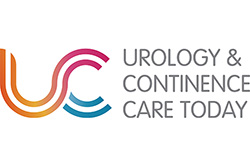The evaluation states that there is not enough evidence to determine whether price variation is justified between different one-piece closed bags for adults with a colostomy. It emphasises that stoma care services should have access to a broad range of one-piece closed bags available for prescription in the NHS, so that adults with a colostomy can have the most appropriate bag for them.
A healthcare professional and the person with a colostomy should decide together which one-piece closed bag to use. Decisions should take into account clinical appropriateness and the person with a colostomy's needs and preferences (including preventing leakage, seepage and peristomal skin complications), which may change over time.
If more than 1 one-piece closed bag is clinically appropriate and meets the needs and preferences of the person with a colostomy, use the least expensive option.
The document lists a number of key outcomes and information that need to be captured, to help to determine whether price variation can be justified between one-piece closed bags for adults with a colostomy.
The document lists the following considerations for healthcare professionals:
‘The clinical evidence available on one-piece closed bags for adults with a colostomy is limited, of low quality and does not consistently report on outcomes important to users. There is not enough clinical evidence to show whether different bags (or their features) would benefit people with a colostomy. But the user-preference assessment found that, when choosing a one-piece closed bag, features that can reduce leakage, seepage and maintain peristomal skin health are most important.
The cost-effective price for a bag is highly uncertain because of the lack of good-quality evidence. There is also not enough evidence to show whether differences between bags or features of bags justify the differences in costs. But the economic evaluation found that bags or features that can prevent PSCs and leakage may have the biggest impact on costs and quality of life.
More evidence is needed on outcomes that are important to people with a colostomy, and that allow clinical and cost benefits to be assessed. This evidence should be collected across different groups of people.’
For further details, including the aspects of the committee’s discussion and details about who was on the committee, go to www.nice.org.uk/guidance/hte29
A healthcare professional and the person with a colostomy should decide together which one-piece closed bag to use. Decisions should take into account clinical appropriateness and the person with a colostomy's needs and preferences (including preventing leakage, seepage and peristomal skin complications), which may change over time.
If more than 1 one-piece closed bag is clinically appropriate and meets the needs and preferences of the person with a colostomy, use the least expensive option.
The document lists a number of key outcomes and information that need to be captured, to help to determine whether price variation can be justified between one-piece closed bags for adults with a colostomy.
Recommendations for healthcare professionals
The document lists the following considerations for healthcare professionals:
- Choosing a one-piece closed bag should be free from sponsorship influence.
- Decide together with the person with a colostomy which one-piece closed bag to use, and follow the principles of NICE's guidance on shared decision making.
- Consider the quality of the clinical evidence when prescribing new bags with claimed innovations.
- When choosing a bag, clinical appropriateness and the needs and preferences of the person with a colostomy should be prioritised. But if more than 1 bag is suitable, the least expensive option should be used. This is because there is no evidence to justify variations in price.
- These recommendations are not intended to affect existing bag use if the choice is clinically appropriate and meets the needs and preferences of the person with a colostomy. These recommendations should be considered when people with a colostomy are switching bags.
- You and your healthcare professional should decide together which one-piece closed bag to use. The bag you choose should be clinically appropriate and meet your needs and preferences. There is a range of one-piece closed bags (from a number of companies) available for prescription in the NHS. But not all one-piece closed bags will be appropriate for you. You should be given information about those that are.
- If more than 1 bag is clinically appropriate and meets your needs and preferences, your healthcare professional will offer you the least expensive one. This is because this assessment found no evidence to show why one bag should cost more than another.
- Your needs and preferences may change over time. Seek support from a healthcare professional if the one-piece closed bag you use causes complications, such as leakage or skin irritation, to see if changing the bag type (or supporting products) helps.
‘The clinical evidence available on one-piece closed bags for adults with a colostomy is limited, of low quality and does not consistently report on outcomes important to users. There is not enough clinical evidence to show whether different bags (or their features) would benefit people with a colostomy. But the user-preference assessment found that, when choosing a one-piece closed bag, features that can reduce leakage, seepage and maintain peristomal skin health are most important.
The cost-effective price for a bag is highly uncertain because of the lack of good-quality evidence. There is also not enough evidence to show whether differences between bags or features of bags justify the differences in costs. But the economic evaluation found that bags or features that can prevent PSCs and leakage may have the biggest impact on costs and quality of life.
More evidence is needed on outcomes that are important to people with a colostomy, and that allow clinical and cost benefits to be assessed. This evidence should be collected across different groups of people.’
For further details, including the aspects of the committee’s discussion and details about who was on the committee, go to www.nice.org.uk/guidance/hte29


